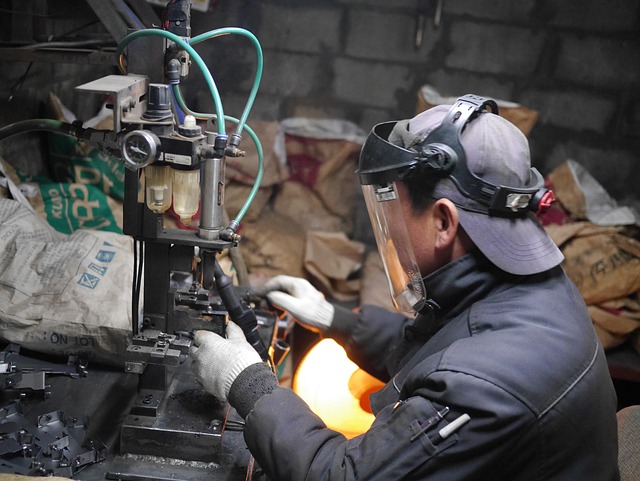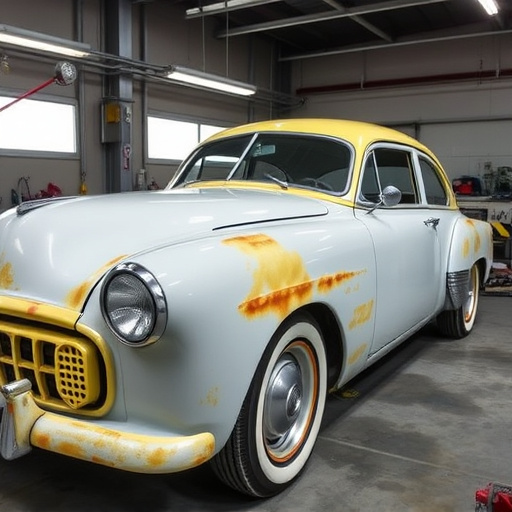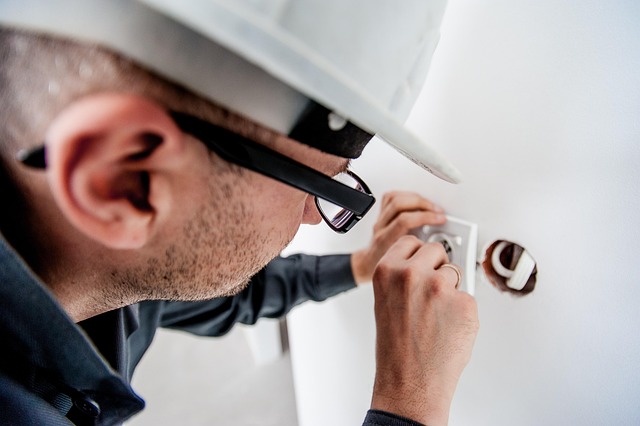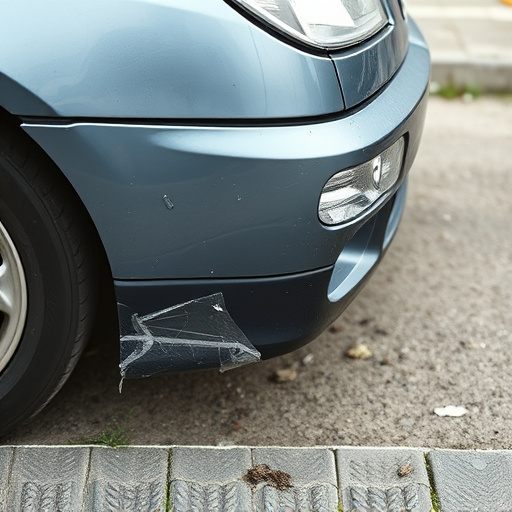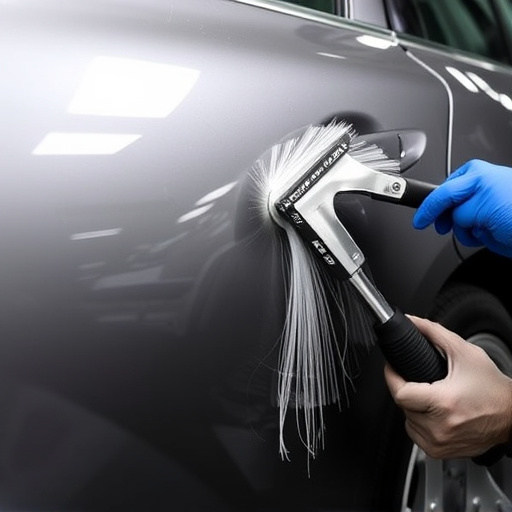The three-stage paint system is an essential process for achieving high-quality finishes in automotive repairs, particularly in collision centers and Mercedes Benz shops. This system includes primer (for bonding), color coat (to achieve desired shade), and clear coat (for protection against environmental factors). Safe implementation requires strict adherence to protocols during preparation, painting, and curing stages, involving proper PPE, ventilation, cleaning, and training for technicians. Best practices ensure efficiency, safety, and sustainability in collision repair and car restoration processes, emphasizing the significance of a robust three-stage paint system.
In today’s automotive industry, the three-stage paint system is a game-changer for technicians. This comprehensive overview explores the intricate process, from surface preparation to final coating, ensuring optimal paint job quality. More importantly, it delves into crucial safety precautions for each stage, protecting technicians and work environments from potential hazards. By implementing best practices, professionals can revolutionize their painting processes, delivering superior results while prioritizing safety.
- Understanding the Three-Stage Paint System: A Comprehensive Overview
- Safety Precautions for Each Stage: Protecting Technicians and Work Environment
- Best Practices for Implementating and Maintaining the Three-Stage Paint System
Understanding the Three-Stage Paint System: A Comprehensive Overview
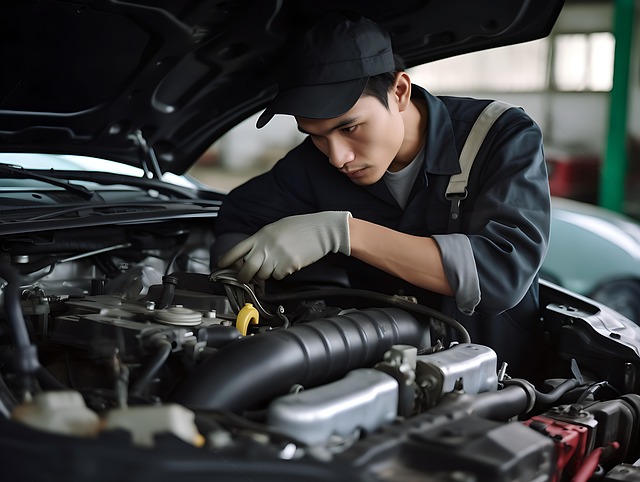
The three-stage paint system is a sophisticated process designed to ensure top-quality finishes in automotive repairs, particularly in collision centers and Mercedes Benz repair shops. This system comprises three distinct layers: primer, color, and clear coat. Each stage plays a critical role in achieving a perfect, durable finish that matches the vehicle’s original specifications. Understanding this multi-layer approach is crucial for technicians to execute paintless dent repair techniques effectively.
This comprehensive overview involves familiarizing oneself with the unique properties of each coat. The primer acts as a bonding agent, preparing the damaged surface for subsequent layers. The color coat, as the name suggests, provides the vehicle’s desired shade, while the clear coat offers protection by forming a barrier against environmental factors like UV rays and oxidation, ensuring longevity and maintaining the vibrancy of the paint job, even in bustling collision centers.
Safety Precautions for Each Stage: Protecting Technicians and Work Environment
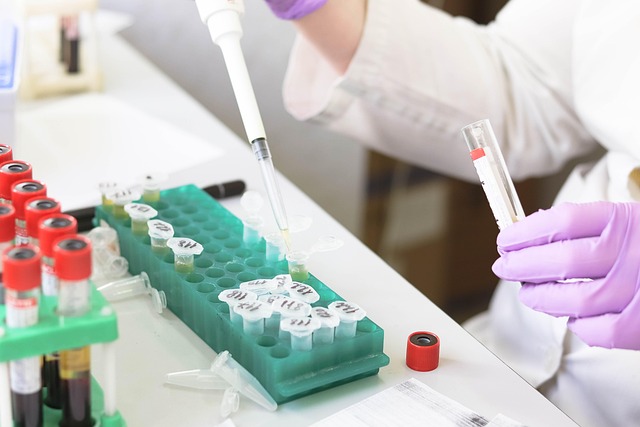
Implementing a robust safety protocol is paramount when employing a three-stage paint system, especially for technicians tasked with its application. Each stage presents unique risks that demand specific precautions to safeguard both the workers and their surroundings.
During the preparation phase, focus on creating a clean, well-ventilated area to mitigate airborne contaminants. Proper personal protective equipment (PPE), including respiratory masks and goggles, is essential to prevent inhalation or splashing of hazardous chemicals. In the painting stage, ensure adequate ventilation to avoid buildup of volatile organic compounds (VOCs). Technicians should use spray guns equipped with fine mist nozzles and maintain a safe distance from the workpiece to reduce overspray. Lastly, in the curing phase, allow sufficient time for paint to dry properly; this prevents not only accidents caused by slippery surfaces but also ensures even, long-lasting coverage, elevating the quality of collision repair and car restoration processes.
Best Practices for Implementating and Maintaining the Three-Stage Paint System

Implementing and maintaining a three-stage paint system requires adherence to best practices for optimal safety and efficiency. Technicians should always wear appropriate personal protective equipment (PPE), including respirators, gloves, and eye protection, throughout the process. Regular cleaning and maintenance of the system are crucial to prevent contamination and ensure consistent performance. This includes meticulous cleaning of all components after each use and routine checks for any signs of wear or damage.
In a collision repair shop or auto maintenance facility, proper ventilation is also essential. The workspace should be well-ventilated to disperse volatile organic compounds (VOCs) effectively, minimizing the risk of inhalation issues. Additionally, technicians should be trained in the correct usage and disposal procedures for all materials involved in the three-stage paint system, contributing to a safer and more sustainable working environment.
The implementation of a three-stage paint system offers significant advantages in terms of efficiency and environmental control. However, ensuring safety throughout each stage is paramount for technicians and the overall work environment. By adhering to best practices outlined in this article, including proper protective equipment, rigorous maintenance protocols, and comprehensive training, technicians can confidently navigate the system while minimizing risks. Armed with knowledge and vigilance, the three-stage paint system becomes a tool for achieving superior results without compromising safety.
